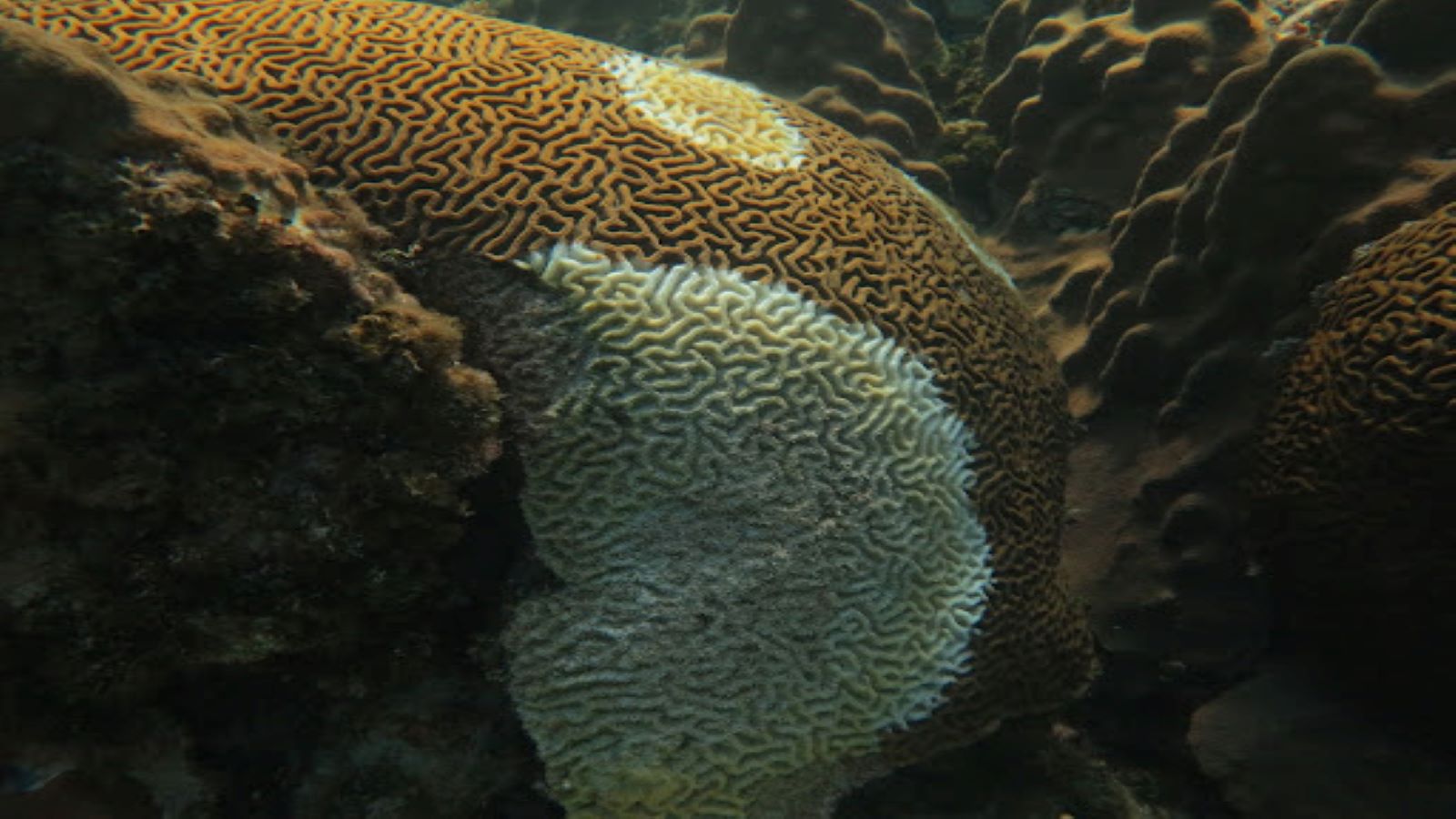Using a crowdsourcing approach to gather both published and unpublished data, scientists have characterized the global bacteria patterns associated with deadly stony coral tissue loss disease (SCTLD). Using meta-analysis, a study of data from other similar research to discover overall trends, scientists were able to find a key species of bacteria was linked to the disease.
According to a new study in the International Society for Microbial Ecology, researchers with the University of Miami’s Cooperative Institute for Marine and Atmospheric Studies (UM-CIMAS), NOAA’s Atlantic Oceanographic and Meteorological Laboratory (AOML), and other partners conducted a meta-analysis of microbiome (the bacteria community) datasets generated by 16 field and laboratory SCTLD studies to determine global bacteria patterns associated with SCTLD.
“Research groups typically make data publicly available upon publication, but by gathering data prior, we were able to conduct the largest microbiome meta-analysis of a single coral disease — helping move more rapidly our understanding of SCTLD. ”
– Stephanie Rosales, lead author UM-CIMAS/NOAA-AOML
It is still unknown what causes SCTLD, but it is clear that it is contagious within the water column. With a 99 percent mortality rate in some coral species, this deadly disease has significantly impacted coral populations throughout Florida and the Caribbean. This study found that even in non-lesion areas of diseased corals, there is a disturbance of sorts that occurs within the coral microbiome. Scientists have found that this disturbance may be driven by the bacteria Flavobacteriales, which is highly abundant in ‘unaffected’ coral tissue.
Two other bacteria types, Rhodobacterales and Peptostreptococcales–Tissierellales, appear to be important in structuring the microbial community and could be driving community interactions that result in the progression of lesions on corals. Researchers also wanted to better understand not only what bacteria were present in corals but also what they might be doing. Using a functional inference analysis, they found that SCTLD lesions were enriched with an alpha-toxin that could be killing coral cells, contributing to SCTLD lesions.
Corals that appear healthy may also suffer from the impacts of SCTLD. Researchers studied three types of reef disease zones: vulnerable (SCTLD had never been reported), epidemic (an SCTLD outbreak was occurring), and endemic (SCTLD regularly occurred). Reefs impacted by SCTLD may change not only the microbial community of diseased corals, but also the microbial community of those corals that look ‘apparently healthy’ in reefs. ‘Apparently healthy’ corals from SCTLD-infected reefs had higher abundances of SCTLD-related bacteria compared to ‘apparently healthy corals’ in reefs without SCTLD present. As such, once SCTLD has reached a reef, corals that appear healthy may still be fighting this disease.
Much of SCTLD science still remains a mystery. However, with research of this complexity being conducted with multiple agencies and academic institutions, there is hope for the future of coral reefs in the Florida and Caribbean region. By learning more about the microbial communities surrounding our vital coral reefs, we are one step closer to discovering more about this deadly disease.
Citation: Rosales, S.M., Huebner, L.K., Evans, J.S. et al. A meta-analysis of the stony coral tissue loss disease microbiome finds key bacteria in unaffected and lesion tissue in diseased colonies. ISME COMMUN. 3, 19 (2023). https://doi.org/10.1038/s43705-023-00220-0
